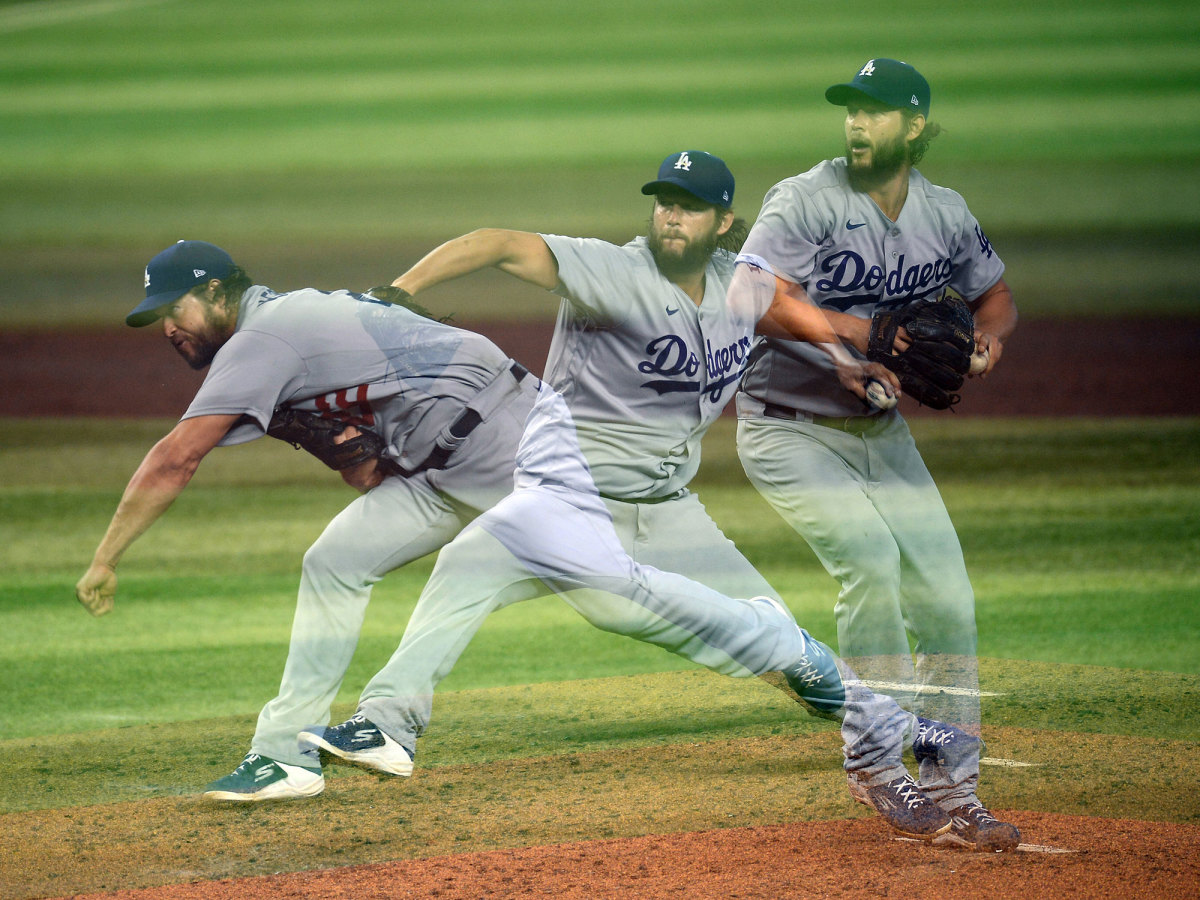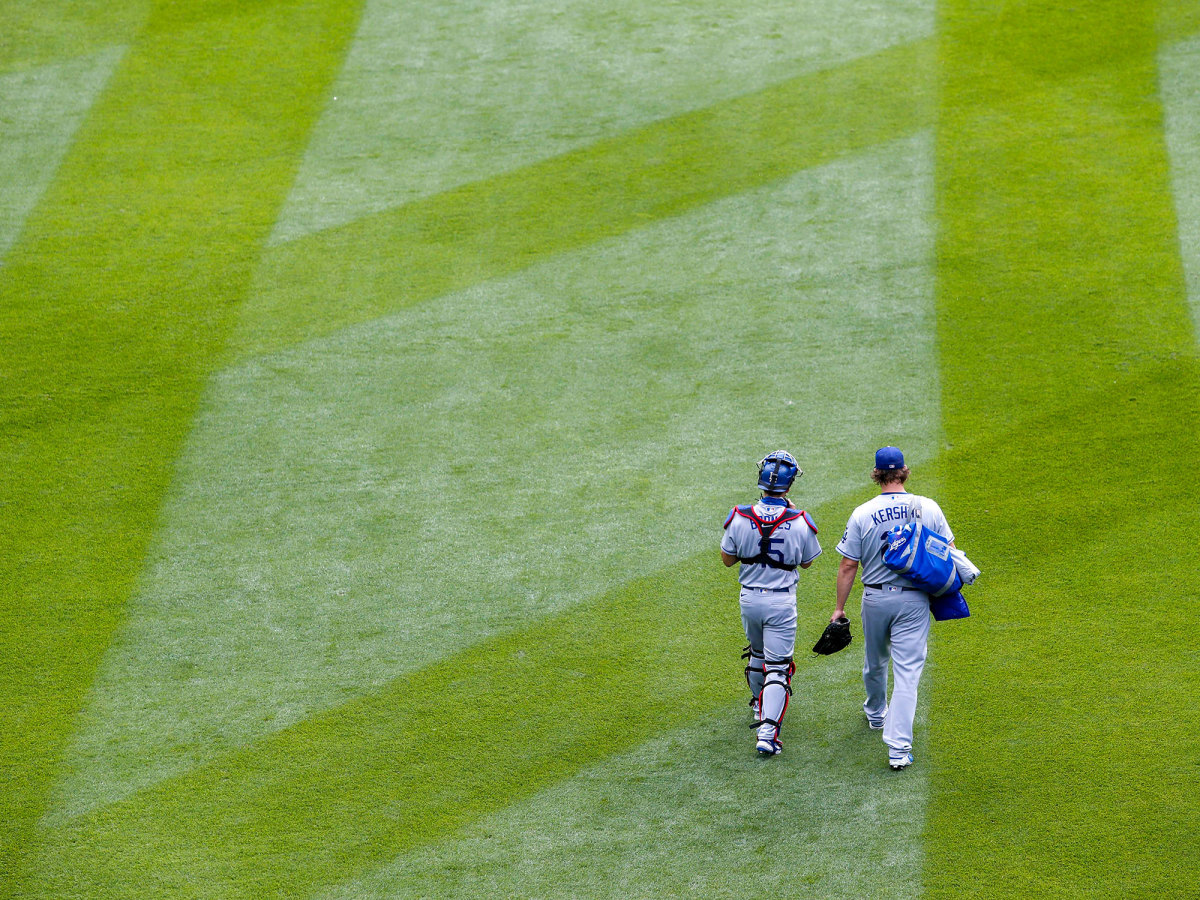Once Again, the World Series Rests in Clayton Kershaw's Hands
ARLINGTON, Texas — Major League Baseball could not ask for a more fitting choice to throw out the first pitch of the 2020 World Series—and not the ceremonial one, either. The story to be written about this World Series begins with Clayton Kershaw.
Pitching close to his Dallas-area home, with a dozen friends and family members in the stands, and with everything in a career a pitcher could dream of except a World Series title and a signature game, the Los Angeles Dodgers lefthander gets his next best shot at fulfillment.
Stars and stories abound. The breakout star entering the series is Tampa Bay outfielder Randy Arozarena, someone his teammates call “the best hitter on the planet,” Rays shortstop Willy Adames calls him “a Latin Kevin Hart,” and Rays manager calls “the Cuban Mookie Betts.” The series also has the real Mookie Betts, who in a series that figures to slog along packed with The Three True Outcomes (walks, strikeouts and home runs) provides needed aesthetic relief with his sublime running, hitting and defense.
Dodgers shortstop Corey Seager is Daniel Murphy 2015 kind of locked in. The Dodgers and Rays have seven pitchers who have hit 99 mph on the radar gun this postseason.
But the most emotional ballast belongs to Kershaw. He has started more postseason games (28) without winning a World Series than any other pitcher. He has pitched in 38% of the Dodgers playoff games in the past 13 years. The Dodgers are 17–18 in his postseason appearances, including a loss in NLCS Game 4 five days ago. His career postseason ERA (4.31) is nearly two runs out of joint with his regular-season work (2.43).

His World Series ERA (5.40) is the fourth worst among pitchers with at least 25 innings. In his past three World Series starts he has allowed 15 runs in 15 2/3 innings, though one of them was made at Minute Maid Park in the year the Astros were stealing signs.
He is 32 years old and shaking off the back spasms that delayed that NLCS start against Atlanta. He is in line to start two of the first five games of this World Series, giving him tremendous influence on who will win it.
“I’m extremely grateful for the opportunity,” Kershaw said Sunday. “How many players get the chance one time and my team is here three of the last four years. I’m extremely excited about tomorrow. I’m not afraid of it. Whatever happens I’m just grateful and thankful. Not many people have the opportunity to succeed or fail in this spot so many times.”
In past years Kershaw carried the burden of ace, be it mental or physical. He would enter October with heavy innings piled upon his rucksack, then pitch deep into stressful games, pitch on short rest and pitch out of the bullpen between starts. One inning the third time around a lineup would seem to break him. Managers Don Mattingly and Dave Roberts tended to stick with their workhorse out of respect for his pedigree and competitiveness. It didn’t always turn out for the better.
“I wouldn’t say he has struggled,” Adames, the Rays' shortstop, said when asked about Kershaw’s postseason troubles. “He goes too far in the game. Too deep.”
This pandemic season has eased the burden. Kershaw is fresher. He is throwing harder this year after four years of declining velocity. He dropped by at Driveline, the pitching lab in Washington, to learn how to find some of that lost pop on his fastball.
“Being very stubborn is a good trait but sometimes it can work against you,” Kershaw said about why he sought a high-tech analysis of his delivery. “Sometimes it’s good to be open to new ideas, different ideas.”
The data showed his arm speed wasn’t necessarily a problem. It was more about synching up the movements of that iconic delivery. “My lower body and trunk needed to get cleaned up,” he said.
Despite adding a tick and a half to his fastball, Kershaw throws more breaking pitches than any starter in baseball. When the count is 3–2, for instance—the truth serum of pitching—he throws his slider 70% of the time.
The revitalized Kershaw has the tools to succeed, as he did in a 13K gem against Milwaukee in the wild card round.
“The key is that slider,” said Braves bench coach Walt Weiss. “It’s easy to say to hitter, ‘just don’t swing at it when it starts on the plate.’ But it looks just like the fastball and has such sharp, late movement that it disappears to a right-handed hitter.”
The Rays are one of the worst offensive teams to win the American League pennant. Only two AL champions hit for a lower average than Tampa Bay’s .238 mark: the 1906 “Hitless Wonders” White Sox (.230) and the 1968 Tigers (.235) in the Year of the Pitcher. They struck out more than any team in baseball.
These games figure to be slow, plodding chess matches filled with full counts and pitching changes. The Dodgers’ hitters don’t chase. The Rays’ pitchers don’t give in. Their general pitching philosophy is this: high fastballs to get ahead, your best breaking ball down to finish them. This postseason they are throwing 48% breaking pitches with two strikes. League average is 38%.
With off days after Games 2 and 5, Rays manager Kevin Cash can be even more maniacal with his bullpen usage. The Rays want to make these games tight and low-scoring. They can’t slug with the Dodgers.
The Dodgers want to force the Tampa Bay pitchers into the zone by not chasing pitches and driving up pitch counts—then they pounce on mistakes for home runs. As Seager likes to say, a long series favors the L.A. hitters as they gather more looks against the opposing pitchers. He was spot on with that call in the NLCS as multiple looks eventually led to multiple home runs.

Those are the nuts and bolts of the series. The way most people will watch the series is much more emotional, even empathetic. As Kershaw was winning his first Cy Young Award, in 2011, a kid named Tyler Glasnow, a Dodger fan who grew up cheering for Shawn Green and Eric Gagne, was graduating from Hart High in Santa Clarita, 31 miles from Dodger Stadium. As a freshman, Glasnow was 5' 8'' with size 15 shoes. He grew to be 6' 6'' as a senior with a 91 mph fastball. He is now 27 years old, 6' 8'' and is one of seven pitchers on the Rays and Dodgers who has hit 100 mph this postseason.
Glasnow is the Tampa Bay Game 1 starter against Kershaw. Glasnow is one of many Dodgers fans (current and former) who have never seen the team win a World Series in their lifetime.
They said John Elway, Phil Mickelson and David Price could not win The Big One—until they did. Reggie Jackson liked to quote his father when things were not going well: “As long as you have a bat in your hands you have a chance to change the story.”
Tonight, Kershaw has the baseball in his hands. This time he takes it with gratitude, not the burden his younger self carried. How it will end is a mystery, but the World Series begins with Kershaw.
